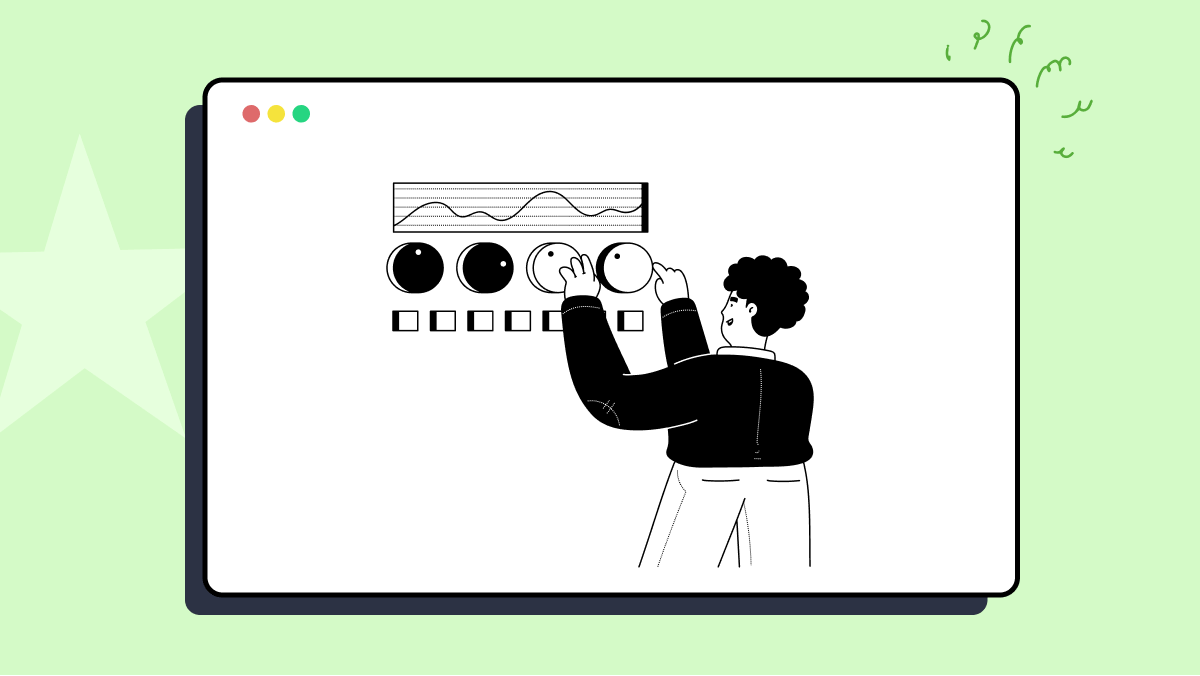How to use getDocField method of org.cerberus.crud.entity.Documentation class
Best Cerberus-source code snippet using org.cerberus.crud.entity.Documentation.getDocField
Source:DocumentationService.java
...115 for (Documentation doc : docList) {116 String docTable = doc.getDocTable();117 if (result.has(docTable)) {118 try {119 result.getJSONObject(docTable).put(doc.getDocField(), convertDocToJSONObject(doc));120 } catch (JSONException ex) {121 LOG.warn(ex);122 }123 } else {124 try {125 result.put(docTable, new JSONObject());126 result.getJSONObject(docTable).put(doc.getDocField(), convertDocToJSONObject(doc));127 } catch (JSONException ex) {128 LOG.warn(ex);129 }130 }131 }132 return result;133 }134 private JSONObject convertDocToJSONObject(Documentation doc) throws JSONException {135 Gson gson = new Gson();136 JSONObject result = new JSONObject(gson.toJson(doc));137 return result;138 }139 @Override140 public List<Documentation> findAllWithEmptyDocLabel(String lang) {...getDocField
Using AI Code Generation
1Documentation doc = new Documentation();2doc.getDocField("myField");3MessageEvent mes = new MessageEvent();4mes.getDocField("myField");5MessageGeneral mes = new MessageGeneral();6mes.getDocField("myField");7MessageEvent mes = new MessageEvent();8mes.getDocField("myField");9TestCaseStepActionControlExecution tc = new TestCaseStepActionControlExecution();10tc.getDocField("myField");11TestCaseStepActionExecution tc = new TestCaseStepActionExecution();12tc.getDocField("myField");13TestCaseStepExecution tc = new TestCaseStepExecution();14tc.getDocField("myField");15TestCaseExecution tc = new TestCaseExecution();16tc.getDocField("myField");17TestCaseExecutionQueue tc = new TestCaseExecutionQueue();18tc.getDocField("myField");19TestCaseExecutionQueueDep tc = new TestCaseExecutionQueueDep();20tc.getDocField("myField");21TestCaseExecutionQueueDep tc = new TestCaseExecutionQueueDep();22tc.getDocField("myField");23TestCaseExecutionQueueDep tc = new TestCaseExecutionQueueDep();24tc.getDocField("myField");25TestCaseExecutionQueueDep tc = new TestCaseExecutionQueueDep();26tc.getDocField("mygetDocField
Using AI Code Generation
1Documentation doc = new Documentation();2String docField = doc.getDocField("myField", "en");3Documentation doc = new Documentation();4String docField = doc.getDocField("myField", "en");5Documentation doc = new Documentation();6String docField = doc.getDocField("myField", "en");7Documentation doc = new Documentation();8String docField = doc.getDocField("myField", "en");9Documentation doc = new Documentation();10String docField = doc.getDocField("myField", "en");11Documentation doc = new Documentation();12String docField = doc.getDocField("myField", "en");13Documentation doc = new Documentation();14String docField = doc.getDocField("myField", "en");15Documentation doc = new Documentation();16String docField = doc.getDocField("myField", "en");17Documentation doc = new Documentation();18String docField = doc.getDocField("myField", "en");19Documentation doc = new Documentation();20String docField = doc.getDocField("myField", "en");21Documentation doc = new Documentation();22String docField = doc.getDocField("myField", "en");23Documentation doc = new Documentation();24String docField = doc.getDocField("myField", "en");getDocField
Using AI Code Generation
1Documentation doc = new Documentation();2String docField = doc.getDocField("TC0001", "Description");3TestCase testCase = new TestCase();4String docField = testCase.getDocField("TC0001", "Description");5TestCaseStep testCaseStep = new TestCaseStep();6String docField = testCaseStep.getDocField("TC0001", "Description");7TestCaseExecution testCaseExecution = new TestCaseExecution();8String docField = testCaseExecution.getDocField("TC0001", "Description");9TestCaseExecutionData testCaseExecutionData = new TestCaseExecutionData();10String docField = testCaseExecutionData.getDocField("TC0001", "Description");11TestCaseExecutionQueue testCaseExecutionQueue = new TestCaseExecutionQueue();12String docField = testCaseExecutionQueue.getDocField("TC0001", "Description");13TestCaseExecutionHttpStat testCaseExecutionHttpStat = new TestCaseExecutionHttpStat();14String docField = testCaseExecutionHttpStat.getDocField("TC0001", "Description");15TestCaseExecutionHttpStat testCaseExecutionHttpStat = new TestCaseExecutionHttpStat();16String docField = testCaseExecutionHttpStat.getDocField("TC0001", "Description");17TestCaseExecutionHttpStat testCaseExecutionHttpStat = new TestCaseExecutionHttpStat();18String docField = testCaseExecutionHttpStat.getDocField("TC0001", "Description");19TestCaseExecutionHttpStat testCaseExecutionHttpStat = new TestCaseExecutionHttpStat();20String docField = testCaseExecutionHttpStat.getDocField("TC0001", "Description");getDocField
Using AI Code Generation
1Documentation doc = new Documentation();2doc.getDocField("FIELD_NAME");3Documentation doc = new Documentation();4doc.getDocField("description", "test", "TEST_NAME", "TEST_CASE");5Documentation doc = new Documentation();6doc.getDocField("description", "testcaseStep", "TEST_NAME", "TEST_CASE", "STEP_ID");7Documentation doc = new Documentation();8doc.getDocField("description", "testcaseStepAction", "TEST_NAME", "TEST_CASE", "STEP_ID", "ACTION_ID");9Documentation doc = new Documentation();10doc.getDocField("description", "testcaseStepActionControl", "TEST_NAME", "TEST_CASE", "STEP_ID", "ACTION_ID", "CONTROL_ID");11Documentation doc = new Documentation();12doc.getDocField("description", "property", "PROPERTY_NAME");13Documentation doc = new Documentation();14doc.getDocField("description", "property", "PROPERTY_NAME");15Documentation doc = new Documentation();16doc.getDocField("description", "application", "APPLICATION_NAME");17Documentation doc = new Documentation();18doc.getDocField("description", "country", "COUNTRY_NAME");19Documentation doc = new Documentation();20doc.getDocField("description", "environment", "ENVIRONMENT_NAME");21Documentation doc = new Documentation();22doc.getDocField("description", "environment", "ENVIRONMENT_NAME");23Documentation doc = new Documentation();24doc.getDocField("description", "environment", "ENVIRONMENT_NAME");Blogs
Check out the latest blogs from LambdaTest on this topic:
Automating testing is a crucial step in the development pipeline of a software product. In an agile development environment, where there is continuous development, deployment, and maintenance of software products, automation testing ensures that the end software products delivered are error-free.
In some sense, testing can be more difficult than coding, as validating the efficiency of the test cases (i.e., the ‘goodness’ of your tests) can be much harder than validating code correctness. In practice, the tests are just executed without any validation beyond the pass/fail verdict. On the contrary, the code is (hopefully) always validated by testing. By designing and executing the test cases the result is that some tests have passed, and some others have failed. Testers do not know much about how many bugs remain in the code, nor about their bug-revealing efficiency.
One of the most important tasks of a software developer is not just writing code fast; it is the ability to find what causes errors and bugs whenever you encounter one and the ability to solve them quickly.
Have you ever struggled with handling hidden elements while automating a web or mobile application? I was recently automating an eCommerce application. I struggled with handling hidden elements on the web page.
Automation Testing Tutorials
Learn to execute automation testing from scratch with LambdaTest Learning Hub. Right from setting up the prerequisites to run your first automation test, to following best practices and diving deeper into advanced test scenarios. LambdaTest Learning Hubs compile a list of step-by-step guides to help you be proficient with different test automation frameworks i.e. Selenium, Cypress, TestNG etc.
LambdaTest Learning Hubs:
- JUnit Tutorial
- TestNG Tutorial
- Webdriver Tutorial
- WebDriverIO Tutorial
- Protractor Tutorial
- Selenium 4 Tutorial
- Jenkins Tutorial
- NUnit Tutorial
- Jest Tutorial
- Playwright Tutorial
- Cypress Tutorial
- PyTest Tutorial
YouTube
You could also refer to video tutorials over LambdaTest YouTube channel to get step by step demonstration from industry experts.
Most used method in Documentation
Try LambdaTest Now !!
Get 100 minutes of automation test minutes FREE!!



